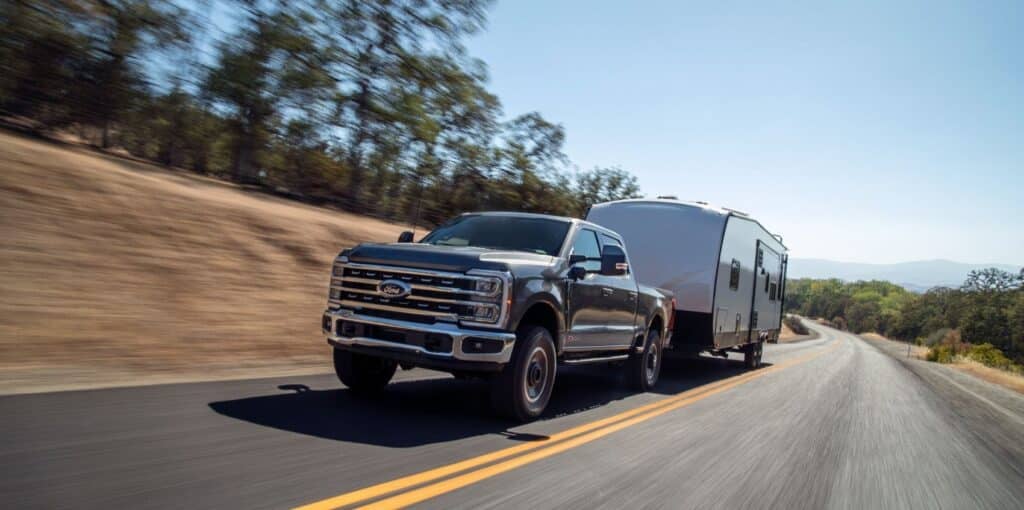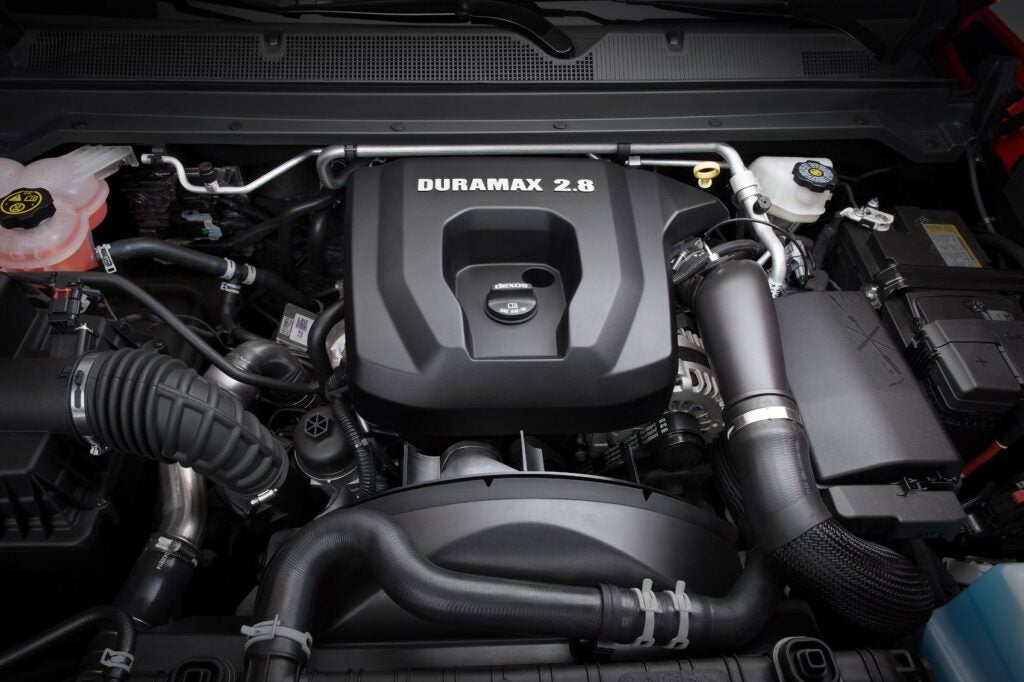
Mechanical & Sensor Fusion: What Diesel Trucks Teach Us About Consumer Adoption of ADAS Technology
Editor’s Note: ADAS is shorthand for “advanced driver assistance systems,” an umbrella term to describe any number of active safety features. Adaptive cruise control, lane departure warning, blind-spot monitoring, and other similar features fall into this category. Consumer views on ADAS features are mixed; some say they are helpful and ease the stress of driving, while others find them annoying and invasive. This article originally appeared on AutoVision News, a sister publication of Automoblog. The content below is from an AutoSens Detroit 2023 presentation, encouraging industry professionals to always see things through the eyes of the consumer.
Centrifugal Pendulum Vibration Absorbers, Shear-Style Body Mounts, and Diesel-Exhaust Brakes share a special relationship. Specific fundamental components like these work together to achieve an overall vehicle goal, be it efficiency, comfort, safety, or performance. In the autonomous driving world, we call this sensor fusion. Mechanical components have their own fusion and play an essential role in “syncing up” with the latest ADAS features. Especially in trucks, the top-selling vehicles in the United States
The examples here are inspired by my time as a Product Specialist on Chevrolet’s National Truck Team, where I traveled the U.S. to represent the brand at NASCAR and IndyCar races, the National Finals Rodeo in Las Vegas, Luke Bryan concert tours, and dozens of state fairs, expositions, and trade shows. While working in this capacity for Chevrolet, I was coming into the AutoSens community for the first time. And somewhere along the way, these observations started percolating.
Merit Badges & Spring Masses
In 2016, the midsize Chevy Colorado was available with a 2.8-liter Duramax turbo-diesel for the first time. The four-cylinder engine produced a whopping 369 lb-ft. of torque (500 Nm) at 2,000 rpm, increasing the Colorado’s maximum towing, payload, and GVWR capacities. Although the Colorado returned to the market in 2015 with a 3.6-liter V6, the truck’s architecture was designed in advance to support the diesel powertrain.
At the time, the notion of a small diesel in the newly redesigned Colorado was a hit. Chevrolet already earned its merit badges with customers and fans with the long-running Duramax diesel in its HD models. Now the midsize Colorado had the option to a wear a Duramax shield on its hood like the muscular 2500 and 3500.
Different from the 6.6 Duramax of the Silverado HD, the 2.8-liter I-4 plant was connected to GM’s Hydra-Matic 6L50 six-speed automatic versus the highly-regarded Allison Transmission of the 2500 and 3500. Unique to the Colorado Duramax was the Centrifugal Pendulum Vibration Absorber (CPVA) integrated into the torque converter, the first time GM leveraged such a design. The CPVA is an absorbing damper with a set of secondary spring masses that – when energized – cancel out torsional vibrations so occupants are less inclined to feel them. These spring masses vibrate in the opposite direction of the engine’s torsional vibrations, balancing out undesirable NVH (noise, vibration, and harshness).

Working In Unison
Metaphorically, if marketing anticipated consumers would question whether or not the Colorado “rides like a truck,” the CPVA was engineering’s answer. So were the Shear-Style Body Mounts bolted to the frame, also new at the time. These stiffer mounts resembled shock absorbers and provided additional dampening during both compression and rebound to calm the “bouncing” feel inside the cab. Under a heavier payload, it made the Colorado more agreeable to drive.
The CPVA and Shear-Style Body Mounts worked alongside the diesel exhaust brake of the 2.8-liter Duramax. If the CPVA and Shear-Style Body Mounts were about comfort, the diesel exhaust brake was about control and confidence. The feature employs the variable vanes in the turbocharger to create backpressure in the engine, slowing the truck down on steeper grades while towing a trailer. Diesel exhaust brakes reduce brake pad wear and prevent a “running away from you” feeling while towing. They also sound really cool when engaged!
Each feature – the CPVA, Shear-Style Body Mounts, and the diesel exhaust brake – work together in mechanical fusion, similar to autonomous vehicle sensors. Illustrating this mechanical fusion while on the road with Chevy Truck Team was always fun; consumers would take to it quickly and ask insightful questions. If given the opportunity, consumers will just as quickly catch on to an explanation of sensor fusion, asking similar and intuitive follow-up questions. This type of dialogue helps build the bridge between ADAS and autonomy and consumer trust.
ADAS & Trucks: Real-World Applications
The applications for ADAS with regard to trucks is an exciting topic under the greater umbrella of advanced safety. Since trucks have multiple use cases, whether for business or pleasure, it opens up plenty of fertile soil for ADAS innovations to take root as helpful tools in the minds of consumers.
For example, adaptive cruise control, lane departure, and blind-spot monitoring systems can be calibrated to consider trailers of varying sizes, from recreational fishing boats to commercial fifth-wheel or gooseneck applications. ADAS innovations can warn drivers of a potential jack-knife, a dangerous event during a sudden loss of traction where the trailer swings into an L or V shape behind the truck. Exterior camera applications are nearly endless for safety and convenience when hooking up and towing a trailer (and that doesn’t include interior monitoring cameras, which could warn a drowsy driver who may pose a greater risk to road safety with a long, heavy trailer in tow).
There is a tremendous opportunity with trucks, given their top-selling stature regardless of manufacturer, to communicate how ADAS technology and mechanical (and structural) components work hand in hand. The opportunity exists to help consumers warm up to the latest ADAS innovations (i.e., new technology) on a vehicle they are already accustomed to seeing (the truck).

The Experiential Marketing Approach
In a hypothetical conversation with a consumer on this topic, perhaps it’s best to start with the truck’s fully-boxed, high-tensile strength steel frame with integrated cross members, a design that prevents it from bending and twisting while towing (reduces a phenomenon known as “tail wagging the dog,” where the trailer drifts side to side). In the rare instance that does happen with a properly loaded trailer, we could explain to the consumer to let off the accelerator. Meanwhile, the trailer sway control system – an important ADAS feature – is already automatically applying brake pressure to individual wheels to balance the trailer back in line behind the truck.
If traveling down a hill with a trailer, we can show them how to engage the tow-haul mode and diesel exhaust brake. Likewise, we can explain how the truck’s blind-spot detection system takes into account the trailer and will issue an alert if they attempt a lane change but don’t see another car hidden in the trailer’s blind zone. The goal is to show the relationship between mechanical and sensor fusion in the hopes consumers will view the truck’s ADAS technology (or any ADAS technology on any vehicle) as helpful rather than a hindrance.
Either way, there will be a test later on the CPVA.
Carl Anthony is the Managing Editor of Automoblog and the host of AutoVision News Radio and AutoSens Insights. He is a Midwest Automotive Media Association member and on the board of directors for the Ally Jolie Baldwin Foundation. Like many Detroiters, Carl is holding out for a Lions Super Bowl win.


